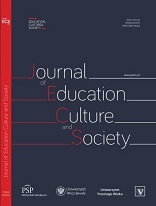Selected opportunities for access to geriatric clients
from the perspective of assisting professions
Selected opportunities for access to geriatric clients
from the perspective of assisting professions
Author(s): Michal VostrýSubject(s): Social Sciences, Sociology, Health and medicine and law, Human Ecology
Published by: Fundacja Pro Scientia Publica
Keywords: dementia;education;elderly education;occupational therapy;special education-intervention;comprehensive rehabilitation;motor deficiency;
Summary/Abstract: Aim. The aim of the work was to find out the infiuence of ICT use (informationand communication technology, in this case gaming console with motion sensor,which senses movements of the probands body and thus is controlled by a fictional figure in the game) on the rehabilitation of cognitive functions including attentionand orientation. Concept/methods. Alzheimer’s disease is becoming increasingly the source ofboth professional and lay discourse. Statistical data show that increasing average life expectancy increases the number of seniors and thus increases the number of people with dementia, with Alzheimer’s disease being the most common type (upto 65% of all cases of dementia in the Czech Republic). This trend will continue to follow, and the number of people affected will increase. For guidance in 2006, 2231 people with Alzheimer’s disease were registered, while in 2010 this number increased to 3148. For the research, 10 probands (100% of women) were used in the age range of 65-81 years, with the diagnosis of Alzheimer’s disease - a light type. Probands were divided into 5 groups, into an experimental group that actively participated in the intervention and services provided by the institutions in which they were located, and a control group that participated only in the services andactivities provided by institution. The research lasted half a year once a week and the activity itself lasted within 25 minutes. Results. Of the 10 probands in total, 5 participated actively in our intervention. Prior to the start of the intervention, the results in the assessment (using the Addenbrook Cognitive Assay) were at the same level, but there was visible change between the experimental and the control group during the outcomes assessment. Conclusion. Experimental group achieved better scores or better results. The results themselves stagnated, while the control group experienced a minor deterioration in the test areas.
Journal: The Journal of Education, Culture, and Society
- Issue Year: 9/2018
- Issue No: 1
- Page Range: 89-95
- Page Count: 7
- Language: English

